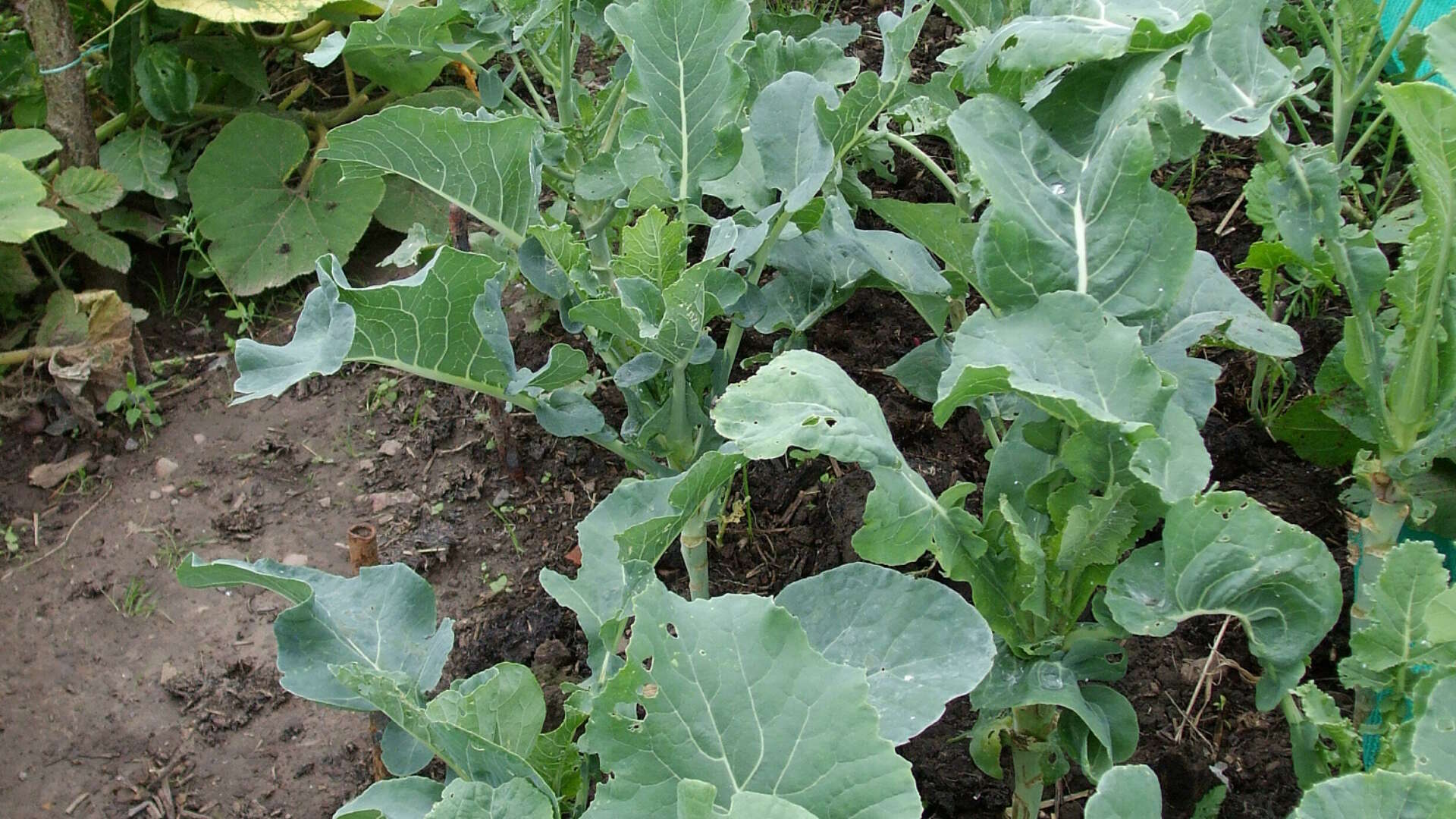
African kale, chomolia, covo
| Growing calendar | |
|---|---|
| Sow indoors | May |
| Plant out | June/July |
| Harvest | All year |
About African kale
This type of kale (Brassica oleracea Acephala cultivar group) is most often grown from cuttings rather than seed. Despite its origin it's quite hardy and survives temperatures down to around minus 10C.
When the flowers do appear, they are (usually) white rather than yellow.
There are two main types that are grown in different ways. Chomolia, from Zimbabwe has a shorter growing season and will eventually flower in the UK, producing seed. The other main type, Covo, will not produce seed in the UK, but is very easily propagated by taking cuttings from side shoots. It grows tall, like a walking stick cabbage, into a large plant.
Leaves can be picked as required, or pieces of the plant cut off and used as spring greens.
How to grow African kale
Sadly, it's currently very difficult to find Covo or Chomolia vegetable seeds in UK seed catalogues – you will need to find a friend that is growing it, to take cuttings. (If you can’t source it, there are places that will supply similar alternatives such as 'Daubenton' or 'Taunton Deane').
For chomolia, sow seeds into modules or trays in May. You can only grow covo from cuttings.
Cuttings of both covo or chomolia can be taken at almost any time of year, although in the depths of winter they may need to be given protection for best rooting.
To start cuttings in a pot, select young side-shoots, 5-10cm/2-4in long and trim stems back to a node. Remove any excess leaves so there are two or three small leaves left. Five cuttings will fit in a 15cm/6in pot full of cutting compost or leafmould mixed with sand. Keep in a warm place, ideally with bottom heat, and once rooted, transfer the cuttings to individual pots of potting compost.
If you want to take cuttings in open ground, use larger shoots – up to 25cm/9in long and about the thickness of a pencil. Remove about two-thirds of the leaves, so you have a bare stalk with leaves at one end. Make a slit with a trowel or spade and insert the cutting about a third of its depth, then press round it firmly. Water until established especially in dry weather.
Planting out African kale
Transplant chomolia kale seedlings in June/July.
For covo cuttings, continue to grow on and transplant to the final position once large enough. Late autumn or winter cuttings should be planted in early spring.
Plants will eventually reach a large size so can be spaced up to1m/3ft apart.
Harvesting and using African kale
Once established, the plant will grow as a perennial bush so that leaves can be harvested whenever required for your African kale recipes. Chomolia and covo are commonly cooked with peanut butter, chilli and tomatoes in a sauce and served with a cornmeal porridge known as 'sadza', a Zimbabwean staple.
Encourage tender young growth by regularly cutting back stems. Covo has a very long harvest season, virtually all year round except in very severe weather. The young flowering shoots of Chomolia can be eaten like purple sprouting, to give a last crop.
Tips on growing African kale
African kale needs a fairly free draining soil with good soil fertility – it should be manured beforehand or grown after turning in a green manure such as vetch or clover. The site should be in full sun. Like other brassicas, it doesn’t appreciate acidic conditions (pH below 6.5.)
African kale will succumb to all the normal pests and diseases that afflict brassicas. At an early stage the plants are tempting pigeon feed, so should be kept covered. In a dry season, leaves may become infested with cabbage aphid especially from August into the autumn once there are fewer predators around to keep them under control.
After 3 or 4 years, the plants often have a lot of thin tougher growth, and this can be a good time to take cuttings and generate new plants to plant in a new location.
The plants should not be grown in an area where brassicas have been grown in the last four years to reduce the risk of clubroot infestation.
Saving seed from African kale
In the UK, seeds can only be saved from Chomolia. It will flower more readily in June/July, and produce a spike with thin pods. Allow these to dry on the plant and collect them shortly before they split and release their seeds.
Chomolia will cross with other commonly grown brassicas if they are flowering such as broccoli or cauliflower, so unless you can isolate from these by at least one mile, we would recommend growing under insect-proof mesh and hand pollinate.
Some kales will grow as perennial plants for a number of years, then suddenly start flowering. We don't know why they do this, but they can be propagated from cuttings or by saving the seed.

| Growing notes | |
|---|---|
| Difficulty | Easy |
| Germination time | Chomolia takes 10-14 days, Covo doesn’t set seed |
| Average time to harvest | As soon as plants large enough – from 6-8 weeks in growing season |
| Equipment needed | Space, may need protection from pigeons |
| Average plant size | 1-1.5m tall and 1m across fully grown |
| Family group | Brassicas |
| Key nutritional content | Vitamins A,C, E, K, folate, calcium, iron, phosphorous, potassium, glucosinolates and fibre. |
| Latin name | Brassica oleraceae var. Acephela |